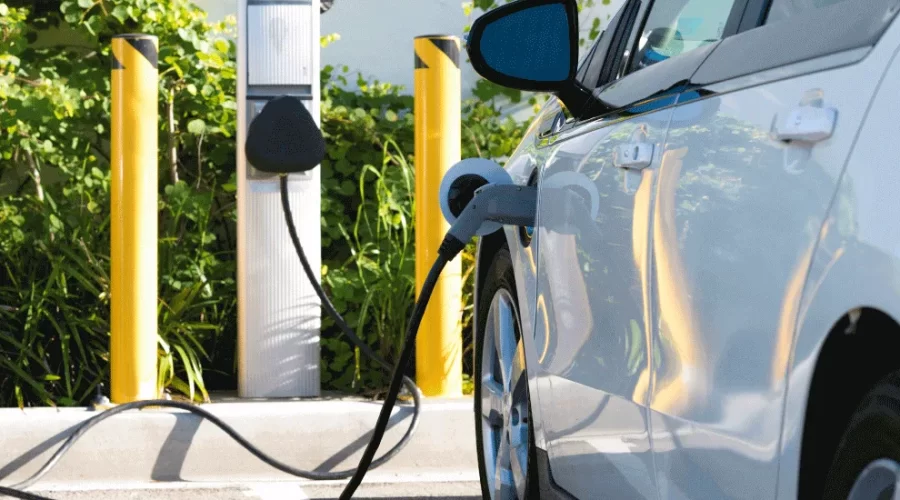Are you thinking of making the switch to an electric vehicle? Fuel prices are skyrocketing, and restrictions on pollutants are now becoming normal. Making the switch can save you financially.
This is our ultimate EV charging guide to keep you right, no matter if you’ve just started your research or are thinking about securing your first EV.
Read on to find out everything you need to know about electric vehicles and EV charging technology.
Jargon Buster
Before you delve too far into learning about EVs, you’ll need to know some EV-related jargon:
EV – short for electric vehicle. This refers to vehicles that run off on only electricity. Also known as battery electric vehicles.
PHEV – short for plug-in hybrid electric vehicle. This refers to vehicles that run on both electricity and fossil fuels. These vehicles have both an electric battery and a combustion engine.
kWh – a unit of measurement that stands for kilowatt-hour.
kW – a unit of measurement that stands for kilowatt.
Rapid charger – a charger designed to charge electric vehicles very quickly, usually 50 – 150 kW chargers available in public spaces.
What Is An Electric Vehicle
An electric vehicle (EV) is a vehicle that only runs on electricity. It uses electricity to fuel every process, from internal computing processes to drive the wheels forward.
Usually, an electric vehicle will have a battery capacity in excess of 30 kWh, with the largest, most efficient batteries being upwards of 80 – 100 kWh in capacity.
What Is A PHEV?
A PHEV (plug-in electric vehicle) is a vehicle that runs on a hybrid fuel source. These vehicles will primarily use petrol or diesel as their fuel source but will also come equipped with a small electric battery.
Usually, in PHEVs the battery size is significantly smaller, around 10 – 30 kWh depending on the car model. The battery is used in conjunction with a combustion engine to make fossil fuels last longer, making them more efficient at using fuel than purely fossil fuel vehicles that only have combustion engines.
Types Of Chargers
When it comes to charging your electric vehicle or plug-in hybrid electric vehicle, it is vital that you source a charger that is of high build quality. Cheaper chargers will be made from lower-quality parts, making them less effective at charging your vehicle. Cheaper chargers will also degrade much faster, meaning they will need to be replaced sooner.
There are two types of chargers available currently:
- Single-phase chargers
- Three-phase chargers
A single-phase charger is designed for use in domestic settings, as almost all homes in the UK will have access to a single-phase power supply.
A three-phase charger is designed for use in commercial and industrial settings. These buildings will usually require a three-phase power supply to handle all the equipment a typical business is required to use for day-to-day operations.
For this reason, if you intend to buy a charger for your home, a single-phase charger is the best option.
Chargers For EVs
For battery-electric vehicles, you’ll be able to use the following:
- 3-pin emergency chargers
- 3.6kW chargers
- 7kW chargers
- 22kW chargers
- 50kW chargers (rapid charger)
- 150kW chargers (rapid charger)
For a home setting, a 7kW charger is ideal for balancing affordability with high-powered charging that can charge most electric vehicles and PHEVs overnight.
Some good brands to consider are Easee, Wallbox, Myenergi, and EVBox.
Chargers For PHEVs
For PHEVs, your options will be more limited to the kind of chargers you’ll be able to use. This is due to the smaller battery capacity and the kind of technology used in these batteries.
For PHEVs, you’ll be able to use the following:
- 3-pin emergency chargers
- 3.6kW chargers
- 7kW chargers
- 22kW chargers (only with certain models of PHEVs)
50kW and 150kW rapid chargers will more than likely not work with your PHEV. Always check with the manufacturer guidelines about what charger your PHEV can use.
Tethered and Untethered Connections
When selecting a charger for your home or business setting, you’ll likely come across both tethered and untethered connections.
A tethered connection is often preferred for business or public locations. A tethered connection is where the charging cable is tethered to the charger, and it will function in a similar way to a traditional fuel pump.
An untethered connection is where the cable and charger can separate. This is often the preferred option for domestic systems due to their versatility.
Type 1 and Type 2 Charging Cables
For EVs and PHEVs, you will likely encounter two cable and connection types when researching what vehicle will be best for you.
In the UK, type 2 charging cables are the dominant type. Type 1 cables are more common in Asia and the United States.
If you intend to buy an import, and you’re importing a type 1 EV or PHEV, you’ll need to purchase a type 1 to type 2 adapter to use your car in the UK.
In Summary
There is a lot to learn about EVs, PHEVs, and EV charging technology. As a last word of advice, always double-check your car’s connection type, and estimate charging times before purchasing. This will help you assess what kind of charger you’ll need.
For more news click thebritaintimes.co.uk
